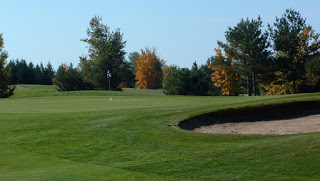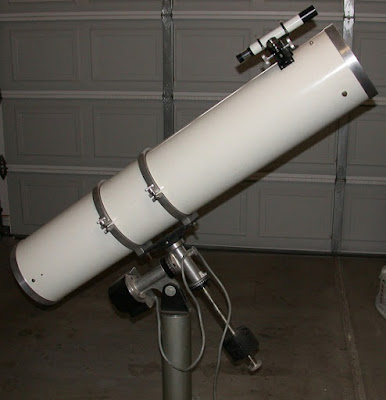On any given clear night, fellow astronomer Mike Petrasko, and I, used to drive our car and light pickup, equipped with my 8-inch, and Mike's 6-inch, 50-inch long, 70-inch high Newtonian reflector telescopes, up onto a fairway at the golf course, in Woods Hole, to about the course's center.
 |
| Woods Hole Golf Course, Woods Hole, MA. |
There, we set up the telescopes and connected their motorized clock drives, to our vehicle batteries, with cables and alligator clips; this was necessary so that, as the Earth rotates during the night - and the stars drift slowly across the sky, the telescopes, when aimed at an object, could counter that motion and follow along, defeating any tendency for the object to drift, in the telescope's field of view.
During the winter months, we'd usually arrive at the golf course just before midnight, set up the equipment, and prepare to spend several hours in sub-freezing temperatures - many times, in the single digits. We'd break down the equipment and leave just after dawn. This happened three or four nights a week - regardless of our regular work schedules, of course.
 |
| Meade 826C Newtonian 8" Telescope. |
We chose that particular observing site because the sky there is relatively dark, free of light pollution, to the north, and absolutely black in the south, over Vineyard Sound. Mike and I had been monitoring a list of galaxies, for possible, extra-galactic, supernovae outbursts.
Extragalactic supernovae are exploding stars, located in galaxies beyond our own Milky Way galaxy, the closest being several thousand light-years away. These outbursts occur, on average, only once every hundred years, or so, in any given galaxy - including our Milky Way. We actually discovered one, one morning, in February of 1989. It is known, today, as SN1989b and is located in the spiral galaxy, M66, in the constellation Leo, the lion. I remember that night very well... - it was 4°F!
One morning, around 4:00am, a local police officer drove up onto the course in his cruiser, with spotlights glaring, and parked next to my truck. In a mock tone of extreme concern, he asked me, what kind of weapon it was that I was using, and what it was pointed at! I told him that, that was highly-classified information and that I could not give him a meaningful answer. He enjoyed the comeback.
After we had explained that we were astronomers, with the SUNSEARCH program, of the Harvard-Smithsonian Observatory in Cambridge, and that the unusual-looking instruments in question were astronomical telescopes, he pointed out that we were not supposed to be there, without express permission from the owner; we could only agree. But, he said, since our activity was benign - and possibly even useful, and since the ground was frozen solid (being February, our tires didn't mess with them, normally, immaculate grass) - that it would be OK, though, he suggested we try golfing there some time, instead.
Some of the finest - and loneliest - hours of my life were spent on that golf course, scanning the universe with my telescope and witnessing, first-hand, many of its mysteries, free of charge. It is where, one night, for the first time, with the use of my Skalnate-Pleso Observatory star atlas, I had experienced a keen awareness of my bearings and my relative position on the Earth, and its position within the solar system, and the solar system's position within the Milky Way galaxy. At that moment, I simply felt like, for the first time, I knew exactly where I was.
It was there, throughout the year, that I did several Mars and Saturn observing sessions, and was witness to a global sandstorm, one night on the red planet. I also made note of any changes, over time, in growth or shrinkage in Mars' south polar ice cap, as Mars progressed through its seasons throughout the Martian year. I've seen Saturn's rings, both in an edge-on aspect and wide open. The interval between those two extremes is about three decades long. Yup, I've been around folks.
Maybe, someday, I'll take that officer's suggestion and play a game of golf there... after I learn how to play, of course... “Fore!”
Dale Alan Bryant
Senior Contributing Science Writer

No comments:
Post a Comment